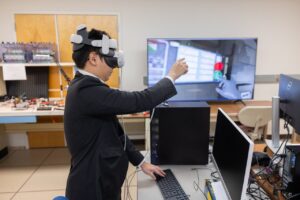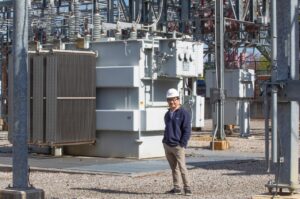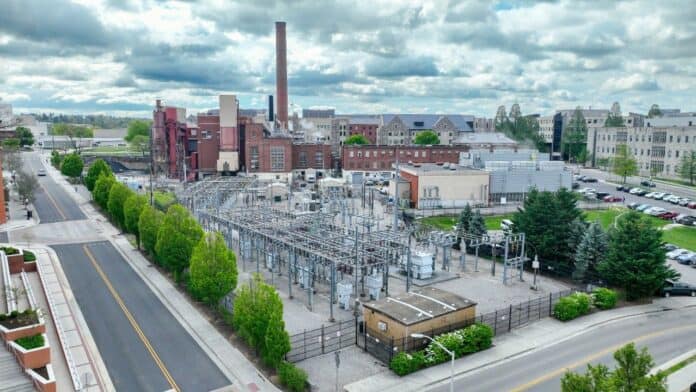Workforce training is about to get a 21st century overhaul through virtual reality.
Traditionally, one of the best ways to learn how to do a job is to get hands-on experience — make mistakes, try new things, and see what happens. But in a significant role, like working at Virginia Tech Electric Service, a learning mistake could have a widespread impact on people, businesses, and campus life in Blacksburg.
“We’re developing a set of tools so that a trainee can interact with the digital twin of a power system and see the impacts of turning a knob or opening a switch on the grid operations and performance,” said Ali Mehrizi-Sani, professor in the Bradley Department of Electrical and Computer Engineering and director of Virginia Tech’s Power and Energy Center. “There has been a host of modern technologies implemented in the power system that can easily overwhelm the existing workforce, especially as many were trained when some of the new tech wasn’t common.”
Mehrizi-Sani is the lead on a joint virtual reality and digital twin research initiative and collaborating with the electric service to develop the next generation of workforce training.
- Virtual reality (VR) is an immersive, computer-generated 3D environment that users interact with, often through headsets, such as the well-known Oculus Rift or Apple Vision Pro. There is no real-time feedback from the environment, as it’s often not based on reality, despite the name.
- Digital twins are real-time, digital replicas of a physical system, process, or object that sync with sensors and internet-connected devices. Digital twins, while based on a real system, don’t have the same visual components as virtual reality.
Mehrizi-Sani’s research team is building a custom VR system that links up to a digital twin of the electric substation on Turner Street. Through the combination of virtual reality and the digital twin, people using the headset can interact with the digital substation as if they were at the real one. For instance, they could throw a switch and see the effects on the whole power system, creating a powerful training experience.

“With virtual training, we exponentially reduce restrictions and increase flexibility,” said Nam Nguyen ’88, executive director of Energy and Utilities at Virginia Tech. “There are more opportunities to virtually walk around the substation. Trainees can make mistakes, and we can even create outage issues. It allows our new linemen to go through the process of identifying and problem solving, all without affecting the real system or people.”
With no real-world impact, this virtual reality training system can serve as a proof of concept for using similar setups in education or the workforce. Virtual reality — sans a digital twin partner — is currently used for training purposes in multiple fields today, including by surgeons, pilots, astronauts, firefighters, and more.
“In today’s world, where activities compete for attention, it’s important to keep our players, trainers, or audience for longer, more meaningful periods,” said Mehrizi-Sani. “VR is our way of doing this providing an immersive experience with real graphics and real, lifelike interactions. Plus, it’s more fun this way.”
This research is funded by the Institute for Critical Technology and Applied Science, the Commonwealth Cyber Initiative, and the National Science Foundation.

By Niki Hazuda


